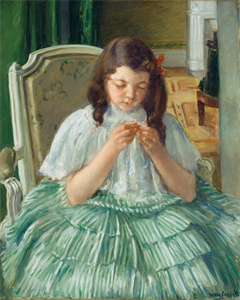
John Lapsley (aka John Whitfield Lapsley, Jr.)
American, 1915–2005
Selma, Alabama native John Lapsley studied in New York at the National Academy of Design and at Columbia University, as well as in Washington, DC at the Phillips Collection. Although in his early years he was devoted to the style of the Mexican Muralist tradition (as were both Crawford Gillis and Charles Shannon, fellow founders of the "New South School") as seen in "Boy Feeding Birds", Lapsley found his true artistic love in the French Post Impressionists’ works that he studied in depth while at the Phillips.
American, 1915–2005
Boy Feeding Birds
1947
Object Type:
Painting
Dimensions:
10 1/2 in. x 14 1/2 in. (26.67 cm x 36.83 cm)
Medium and Support:
Fresco on wood panel
Accession Number:
2005.0010.0001
Credit Line:
Gift of Mary Bert and Alvin Gutman in memory of Jerome (Jerry) E. Siegel, Jr.
Currently On View
Selma, Alabama native John Lapsley studied in New York at the National Academy of Design and at Columbia University, as well as in Washington, DC at the Phillips Collection. Although in his early years he was devoted to the style of the Mexican Muralist tradition (as were both Crawford Gillis and Charles Shannon, fellow founders of the "New South School") as seen in "Boy Feeding Birds", Lapsley found his true artistic love in the French Post Impressionists’ works that he studied in depth while at the Phillips.
Keywords
Click a term to view the records with the same keyword
Portfolio List
Click a portfolio name to view all the objects in that portfolio
This object is a member of the following portfolios:
Your current search criteria is: Keyword is "DB" and [Object]Century is "Twentieth Century".

 by Artist (37)
by Artist (37)
